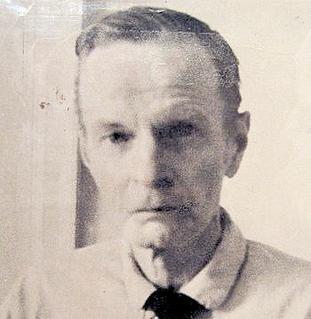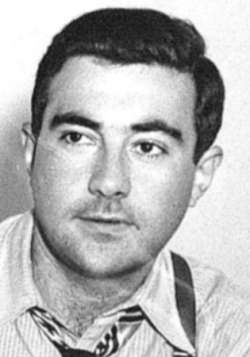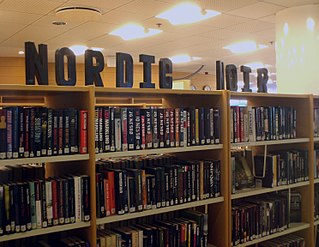
Noir fiction (or roman noir) is a subgenre of crime fiction.

Noir fiction (or roman noir) is a subgenre of crime fiction.
Noir denotes a marked darkness in theme and subject matter, generally featuring a disturbing mixture of sex and violence. [1]
While related to and frequently confused with hardboiled detective fiction—due to the regular adaptation of hardboiled detective stories in the film noir style—the two are not the same. [2] Both regularly take place against a backdrop of systemic and institutional corruption. However, noir (French for "black") fiction is centred on protagonists that are either victims, suspects, or perpetrators—often self-destructive. A typical protagonist of noir fiction is forced to deal with a corrupt legal, political or other system, through which the protagonist is either victimized and/or has to victimize others, leading to a lose-lose situation. Otto Penzler argues that the traditional hardboiled detective story and noir story are "diametrically opposed, with mutually exclusive philosophical premises". While the classic hardboiled private detective—as exemplified by the creations of writers such as Dashiell Hammett, Raymond Chandler and Mickey Spillane—may bend or break the law, this is done by a protagonist with meaningful agency in pursuit of justice, and "although not every one of their cases may have a happy conclusion, the hero nonetheless will emerge with a clean ethical slate." [3] [4] [5] Noir works, on the other hand,
whether films, novels, or short stories, are existential pessimistic tales about people, including (or especially) protagonists who are seriously flawed and morally questionable. The tone is generally bleak and nihilistic, with characters whose greed, lust, jealousy, and alienation lead them into a downward spiral as their plans and schemes inevitably go awry. ... The machinations of their relentless lust will cause them to lie, steal, cheat, and even kill as they become more and more entangled in a web from which they cannot possibly extricate themselves. [3]
Author and academic Megan Abbott described the two thus:
Hardboiled is distinct from noir, though they’re often used interchangeably. The common argument is that hardboiled novels are an extension of the wild west and pioneer narratives of the 19th century. The wilderness becomes the city, and the hero is usually a somewhat fallen character, a detective or a cop. At the end, everything is a mess, people have died, but the hero has done the right thing or close to it, and order has, to a certain extent, been restored.
Noir is different. In noir, everyone is fallen, and right and wrong are not clearly defined and maybe not even attainable. [6]
Andrew Pepper, in an essay published in The Cambridge Companion to American Crime Fiction, listed the major thematic commonalities of noir fiction as “the corrosive effects of money, the meaninglessness and absurdity of existence, anxieties about masculinity and the bureaucratization of public life, a fascination with the grotesque and a flirtation with, and rejection of, Freudian psychoanalysis.” [7] Eddie Duggan discusses the distinction between hardboiled and noir fiction, claiming that "psychological instability is the key characteristic of the protagonists of noir writing, if not the key characteristic of the noir writers themselves". [8] Similarly, Johnny Temple, founder of Akashic Books, observed that noir fiction tends to be written by "authors whose life circumstances often place them in environments vulnerable to crime." [9]
Beginning with 1940's The Bride Wore Black, author Cornell Woolrich wrote a series of six unrelated noir novels with "black" in the title, three of which were adapted for film in the 1940s. The word "noir" was used by the Paris-based publisher Gallimard in 1945 as the title for its Série Noire crime fiction imprint. In the English-speaking world, the term originated as a cinematic one—film noir. [2] This term again first appeared in France, in 1946, [3] though it did not enjoy wide use until the 1970s. [10] Film noir refers to cinematic works based on novels of both the hardboiled and noir traditions, exhibiting realism and postwar disillusionment as influenced by German Expressionism.
James M. Cain is regarded as an American pioneer of the hardboiled and noir genres. [8] Other important early American writers in the noir genre include Cornell Woolrich, Jim Thompson, Horace McCoy, and David Goodis. In the 1950s, Fawcett Books' Gold Medal imprint was instrumental in releasing noir and crime novels from such writers as Elliott Chaze, Charles Williams, Gil Brewer, Harry Whittington, Peter Rabe, and Lionel White, as well as Goodis and Thompson. In the 1980s, American publisher Black Lizard would re-release many of these works. [11] Today, publisher Akashic Books features an elaborate line of noir short-story anthologies. [12] [13]
Prominent European authors of the genre include Jean-Claude Izzo and Massimo Carlotto. According to Italian publisher Sandro Ferri, "Mediterranean noir" is remarkable for its attention to the duality of Mediterranean life:
The prevailing vision in the novels belonging to the genre known as Mediterranean noir is a pessimistic one. Authors and their literary inventions look upon the cities of the Mediterranean and see places that have been broken, battered, and distorted by crime. There is always a kind of dualism that pervades these works. On one hand, there is the Mediterranean lifestyle—fine wine and fine food, friendship, conviviality, solidarity, blue skies and limpid seas—an art of living brought almost to perfection. On the other hand, violence, corruption, greed, and abuses of power. [14]
Of latter-day novelists who write in both the hardboiled and noir modes, the most prominent is James Ellroy. Calling noir "the most scrutinized offshoot of the hard-boiled school of fiction", he wrote:
The thrill of noir is the rush of moral forfeit and the abandonment to titillation. The social importance of noir is its grounding in the big themes of race, class, gender, and systemic corruption. The overarching and lasting appeal of noir is that it makes doom fun. [3]

Film noir is a cinematic term used primarily to describe stylized Hollywood crime dramas, particularly those that emphasize cynical attitudes and motivations. The 1940s and 1950s are generally regarded as the "classic period" of American film noir. Film noir of this era is associated with a low-key, black-and-white visual style that has roots in German Expressionist cinematography. Many of the prototypical stories and attitudes expressed in classic noir derive from the hardboiled school of crime fiction that emerged in the United States during the Great Depression.

Crime fiction, detective story, murder mystery, mystery novel, and police novel are terms used to describe narratives that centre on criminal acts and especially on the investigation, either by an amateur or a professional detective, of a crime, often a murder. It is usually distinguished from mainstream fiction and other genres such as historical fiction or science fiction, but the boundaries are indistinct. Crime fiction has several subgenres, including detective fiction, courtroom drama, hard-boiled fiction, and legal thrillers. Most crime drama focuses on crime investigation and does not feature the courtroom. Suspense and mystery are key elements that are nearly ubiquitous to the genre.

The "locked-room" or "impossible crime" mystery is a type of crime seen in crime and detective fiction. The crime in question, typically murder, is committed in circumstances under which it appeared impossible for the perpetrator to enter the crime scene, commit the crime, and leave undetected. The crime in question typically involves a situation whereby an intruder could not have left; for example the original literal "locked room": a murder victim found in a windowless room locked from the inside at the time of discovery. Following other conventions of classic detective fiction, the reader is normally presented with the puzzle and all of the clues, and is encouraged to solve the mystery before the solution is revealed in a dramatic climax.
Black Lizard was an American book publisher. A division of the Creative Arts Book Company of Berkeley, California, Black Lizard specialized in reprinting forgotten crime fiction and noir fiction writers and novels originally released between the 1930s and the 1960s, many of which are now acknowledged as classics of their genres.

Cornell George Hopley Woolrich was an American novelist and short story writer. He sometimes used the pseudonyms William Irish and George Hopley.

Black Mask was a pulp magazine first published in April 1920 by the journalist H. L. Mencken and the drama critic George Jean Nathan. It is most well-known today for launching the hardboiled crime subgenre of mystery fiction, publishing now-classic works by Dashiell Hammett, Raymond Chandler, Erle Stanley Gardner, Cornell Woolrich, Paul Cain, Carroll John Daly, and others.

Lee Earle "James" Ellroy is an American crime fiction writer and essayist. Ellroy has become known for a telegrammatic prose style in his most recent work, wherein he frequently omits connecting words and uses only short, staccato sentences, and in particular for the novels The Black Dahlia (1987) and L.A. Confidential (1990).
Neo-noir is a revival of film noir, a genre that had originally flourished during and after World War II in the United States—roughly from 1940 to 1960. The French term film noir translates literally to English as "dark film" or “black film”, because they were quite dark both in lighting and in sinister stories often presented in a shadowy cinematographic style. Neo-noir has a similar style but with updated themes, content, style, and visual elements.
Noir is the French word for black. It may also refer to:
Hardboiled fiction is a literary genre that shares some of its characters and settings with crime fiction. The genre's typical protagonist is a detective who battles the violence of organized crime that flourished during Prohibition (1920–1933) and its aftermath, while dealing with a legal system that has become as corrupt as the organized crime itself. Rendered cynical by this cycle of violence, the detectives of hardboiled fiction are often antiheroes. Notable hardboiled detectives include Dick Tracy, Philip Marlowe, Nick Charles, Mike Hammer, Sam Spade, Lew Archer, Slam Bradley, and The Continental Op.

David Loeb Goodis was an American writer of crime fiction noted for his output of short stories and novels in the noir fiction genre. Born in Philadelphia, Goodis alternately resided there and in New York City and Hollywood during his professional years. According to critic Dennis Drabelle, "Despite his [university] education, a combination of ethnicity (Jewish) and temperament allowed him to empathize with outsiders: the working poor, the unjustly accused, fugitives, criminals."
Otto Penzler is an American editor of mystery fiction, and proprietor of The Mysterious Bookshop in New York City.

Joel Townsley Rogers was an American writer who wrote science fiction, air-adventure, and mystery stories and a handful of mystery novels. He is most well known for his murder mystery The Red Right Hand, which is considered a cult classic of the genre and won the French literary award Grand Prix de Littérature Policière in 1951.

S. J. Rozan is an American architect and writer of detective fiction and thrillers, based in New York City. She also co-writes a paranormal thriller series under the pseudonym Sam Cabot with Carlos Dews.
George Caryl Sims, better known by his pen names Paul Cain and Peter Ruric, was an American pulp fiction author and screenwriter. He is best known for his novel Fast One, which is considered to be a landmark of the pulp fiction genre and was called the "high point in the ultra hard-boiled manner" by Raymond Chandler. Lee Server, author of the Encyclopedia of Pulp Fiction Writers, called Fast One "a cold-hearted, machine-gun-paced masterwork" and his other writings "gemlike, stoic and merciless vignettes that seemed to come direct from the bootlegging front lines."

Nordic noir, also known as Scandinavian noir, is a genre of crime fiction usually written from a police point of view and set in Scandinavia or the Nordic countries. Nordic noir often employs plain language, avoiding metaphor, and is typically set in bleak landscapes. This results in a dark and morally complex mood, in which a tension is depicted between the apparently still and bland social surface and the patterns of murder, misogyny, rape, and racism the genre depicts as lying underneath. It contrasts with the whodunit style such as the English country house murder mystery.

Megan Abbott is an American author of crime fiction and of non-fiction analyses of hardboiled crime fiction. Her novels and short stories have drawn from and re-worked classic subgenres of crime writing from a female perspective. She is also an American writer and producer of television.

Reed Farrel Coleman is an American writer of crime fiction and a poet.

Eddie Duggan is a British photographer, film-maker, screenwriter, author and academic games historian.

Paul D. Marks was an American novelist and short story writer. His novel White Heat, a mystery-thriller set during the Rodney King riots of 1992, won the first Shamus Award for Independent Private Eye Novel from the Private Eye Writers of America.